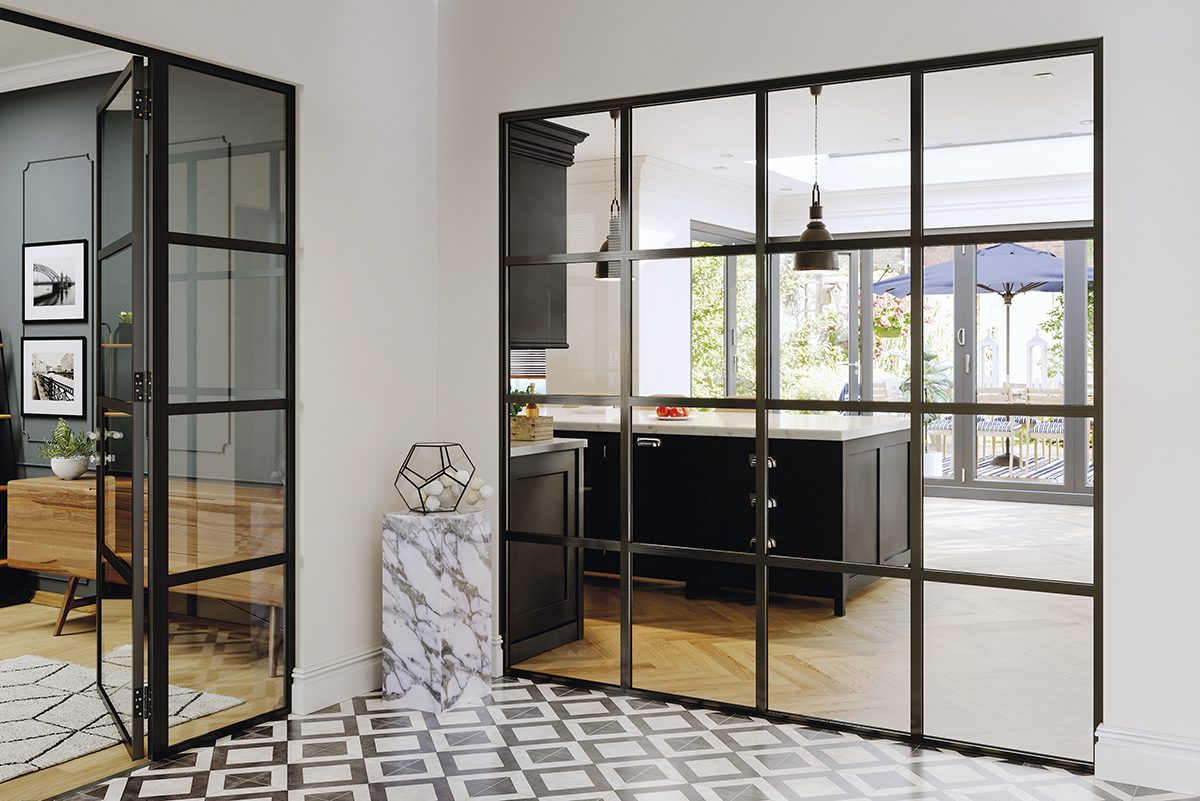Ben Brocklesby, Director at Origin, discusses the benefits of internal glass doors in relation to the Future Homes Standard.
In association with![]()
The introduction of the highly anticipated Future Homes Standard, which aims to make all new homes carbon neutral by 2025, will signify considerable changes for the entire housebuilding industry. Once this comes into effect, all new properties must produce 31 percent less carbon emissions, with all non-domestic buildings meeting a 27 percent reduction.
Progress towards this standard has already begun, with changes to the likes of Part L introduced earlier this year. One of the biggest impacts of these updated regulations was on glazing, which must now meet significantly reduced U-values in order to increase the thermal efficiency of homes.
The glazing industry has successfully responded to these changes, with most suppliers adapting their products to meet the new requirements. For example, at Origin, due to our long-standing practice of working closely with architects and homebuilders, most of our product range already met or exceeded the new U-values required. For those products that didn’t, our continued commitment to innovation enabled us to develop the inside of our products to increase thermal efficiency without compromising on the quality, aesthetics, or functionality that Origin is known for.
However, many manufacturers had to resort to implementing triple glazing across their entire product ranges to meet the new standards. This is an adequate solution for now. However, with this tactic already used, it’s likely that these suppliers will struggle to meet the more stringent requirements when they are introduced in three years’ time.
One potential solution is to offer smaller window formats. Although not widespread in the UK, smaller windows are a regular sight across most of Europe – particularly in Portugal, Spain, and the south of France – as they are effective in preventing homes from getting too hot in the daytime. However, smaller windows come with their disadvantages, including reducing the amount of natural light able to enter a property.
This means architects will have to work harder than ever to ensure that homes don’t become dark or dingy. For example, we anticipate a rise in the number of architects and housebuilders incorporating internal glazing into properties to promote the flow of natural light from room to room and counter the impact of potentially smaller windows. At Origin, our new OI-30 Internal Door is available in a range of configurations and can be used as a door or screen. Plus, corner configurations can be made to create an entirely new room using glazing.
One thing is for sure, with the Future Homes Standard (2025) on the horizon, it’s crucial that architects, housebuilders, and glazing manufacturers take an increasingly collaborative and innovative approach to glazing to ensure that homes remain functional, practical, and sustainable, without compromising on crucial natural light.
Contact Details
To find out more please visit the Origin website.
Source: Architecture Today






